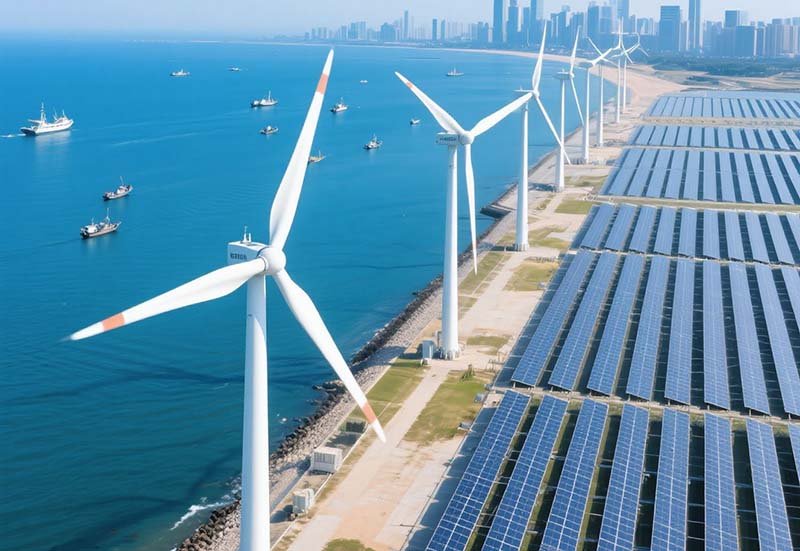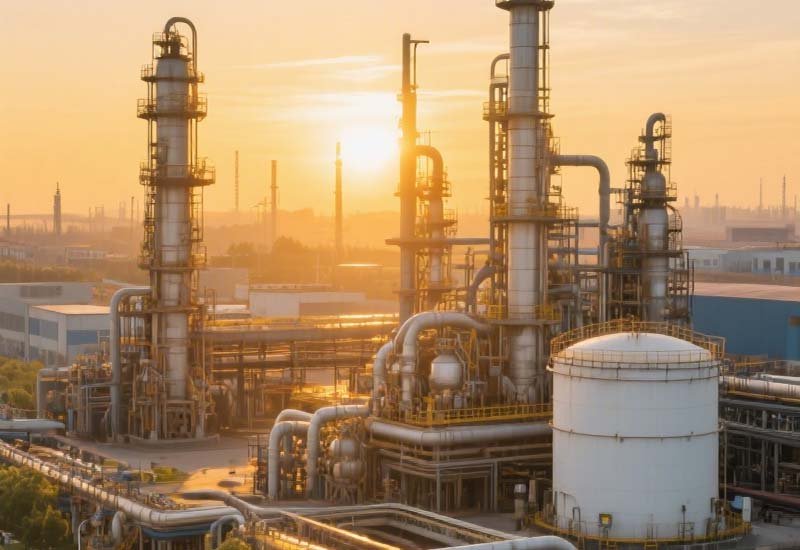Optimal Solar and Wind Energy Fastener Solutions
Solar and Wind Energy Fastener selection plays a crucial role in the long-term performance and reliability of renewable energy installations. Renewable energy systems such as solar photovoltaic (PV) installations and wind turbines operate in challenging outdoor environments, often exposed to UV radiation, heavy winds, humidity, and coastal corrosion. Fasteners used in these systems must offer excellent durability, long service life, and anti-loosening performance to ensure structural integrity and safety over decades of operation.

Performance Requirements for Solar and Wind Energy Fastener
Solar and wind applications demand fasteners that combine corrosion resistance, mechanical strength, and efficient installation. Materials like 304/316 stainless steel, hot-dip galvanized carbon steel, and coated alloy steel are commonly used to ensure long-lasting performance in coastal or high-altitude conditions. Anti-loosening, vibration resistance, and UV tolerance are also essential properties.
Recommended Solar and Wind Energy Fastener & Typical Applications
- Stainless Steel Bolts (304/316): Widely used in PV racking systems, panel frame joints, and mounting rails exposed to rain or salt air.
- T-slot Bolts (HDG Carbon Steel or A2 SS): Ideal for aluminum rail systems in solar mounting structures, allowing adjustable fixation.
- Lock Nuts (Nylon Insert or All-Metal): Prevent loosening from turbine blade vibration or solar tracker movement.
- Flat Washers (A2/A4 Stainless Steel): Distribute load and protect aluminum surfaces in panel frames and inverter mounts.
- U-Bolts (316 SS or Galvanized Steel): Fix cylindrical pipes or poles in both ground-mounted and rooftop solar applications.
- Self-Tapping Screws (410 SS or Zinc-Plated Steel): Used for mounting brackets, module clamps, and junction boxes.
Application Scenarios in Solar and Wind Energy Fastener
- Photovoltaic Module Installation: Fasteners play a vital role in the secure and long-term installation of solar panels. Stainless steel screws, bolts, and rivets are used to mount aluminum frames and supporting rails onto ground-mounted or rooftop systems. Tilt brackets are held in place using weather-resistant bolts that can endure thermal cycling and wind uplift forces. Anti-corrosion coatings such as Zn-Al flake or anodizing are often applied to extend service life, especially in humid or coastal regions. Proper torque control and anti-slip washers are critical to prevent loosening under dynamic loads.
- Solar Tracker Systems: To maximize solar panel efficiency, tracker systems rotate panels to follow the sun. These moving systems rely heavily on high-strength fasteners that ensure the mechanical integrity of gearboxes, rotating joints, and actuator connections. Bolts with property class 10.9 or above are often chosen for their superior tensile strength, while anti-loosening solutions such as lock nuts, spring washers, or thread-locking compounds are employed to maintain joint stability under continuous motion and long-term fatigue stress. Corrosion-resistant coatings are also essential due to outdoor exposure.
- Wind Turbine Nacelle & Tower: Wind turbines are subjected to extreme environmental conditions and mechanical vibrations from aerodynamic loading. Fasteners in these systems must tolerate high fatigue and dynamic loads. Structural bolts (e.g., ASTM A490 or EN 14399) secure tower flanges, rotor hubs, and nacelle components. Lock nuts, wedge-lock washers, and tension-control bolts ensure joint integrity under cyclic load conditions. In addition, helicoil inserts or preloaded bolts may be used in critical zones to prevent thread stripping and maintain consistent preload over time.
- Offshore Solar & Wind Farms: Fasteners used in marine environments face increased corrosion risks due to constant exposure to salt spray, humidity, and temperature fluctuations. As such, highly corrosion-resistant materials like A4 (316) stainless steel, duplex, or super duplex alloys are preferred. In offshore wind turbine foundations and substructures, heavy-duty bolts are often hot-dip galvanized or feature specialized coatings like fluoropolymer paints. Cathodic protection and isolation sleeves may also be used to mitigate galvanic corrosion between dissimilar metals.
- Battery Storage and Inverters: Energy storage installations and inverter systems require compact and reliable fastening to ensure electrical safety and mechanical stability. Mounting brackets, PCB boards, connection terminals, and heat sinks are secured using machine screws, square nuts, and flat washers. Outdoor enclosures, especially in solar fields or wind farms, demand fasteners with IP-rated sealing properties, anti-vibration features, and resistance to UV degradation. The selection of conductive vs. insulating fasteners is also important for grounding and electrical insulation purposes.
Flybear Quality Control Advantage
At Flybear, we provide specialized fastening solutions that meet the evolving demands of the renewable energy industry. Our quality control system complies with ISO 9001, and IATF 16949 standards. All fasteners undergo strict inspections including salt spray corrosion testing, mechanical load testing, hardness evaluation, and thread gauge verification.
Whether your project requires marine-grade 316 stainless steel bolts for offshore wind farms, or high-volume standard parts for solar racking systems, Flybear delivers reliable and customized fasteners with full traceability and competitive lead times.
Why Choose Flybear
- Full range of stainless, carbon, and alloy steel fasteners
- Custom material, coating, and packaging services
- Excellent corrosion resistance and anti-loosening options
- Dedicated support for solar EPCs and wind energy contractors
- Exported to over 40 countries with proven project experience


